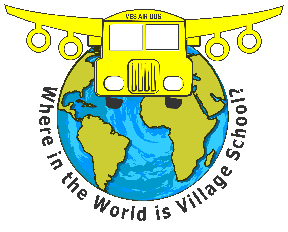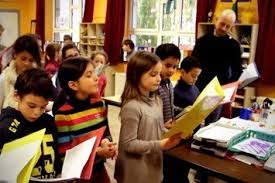 |
| The Cathedral Ghent |
We've left Finland traveling 1,030.7 miles southwest (1658.7 Kilometers / 895 Nautical Miles) to our new Western European Country destination that is approximately the size of Maryland.
Despite its small size, it is the main trading partner of India along with the UK (partly because of the diamond and steel industries).
This country is known for its medieval old towns, Flemish Renaissance architecture and is the international headquarters of the European Union and NATO.
The country is divided into 2 distinctive multilingual regions: Dutch-speaking Flanders to the north and French-speaking Wallonia to the south. The bilingual capital, Brussels, is home to ornate guildhalls at Grand-Place and an art nouveau-influenced European Quarter.
 |
| The Capital City |
 |
| The Flag |
Geographic coordinates: 50 50 N, 4 00 E
Capitals: City of Brussels
Population: 11.2 million (2013) World Bank
King: Philippe of Belgium
Government Type: Federal Parliamentary Democracy under Constitutional Monarchy
Continent: Europe
Official languages: French, Dutch, German
 Tax levels in this country are among the highest in the world, with about 40% of gross earnings given up in tax for a single-income family. A study for 2005 reveal that this country had the highest average income tax rate out of 30 OECD countries. Total taxation represents 45.6 % of the country's GDP. Inheritance tax can reach up to 80%. The Royal family alone receives 12 million € of tax-payers' money each year.
Tax levels in this country are among the highest in the world, with about 40% of gross earnings given up in tax for a single-income family. A study for 2005 reveal that this country had the highest average income tax rate out of 30 OECD countries. Total taxation represents 45.6 % of the country's GDP. Inheritance tax can reach up to 80%. The Royal family alone receives 12 million € of tax-payers' money each year.
 Environment - current issues:
Environment - current issues:
the environment is exposed to intense pressures from human activities: urbanization, dense transportation network, industry, extensive animal breeding and crop cultivation; air and water pollution also have repercussions for its neighboring countries
Natural hazards: flooding is a threat along rivers and in areas of reclaimed coastal land, protected from the sea by concrete dikes
Agriculture - products:
sugar beets, fresh vegetables, fruits, grain, tobacco; beef, veal, pork, milk
 |
The Arnolphini Wedding (1434)
One of three panels Oil
|
Industries:
engineering and metal products, motor vehicle assembly, transportation equipment, scientific instruments, processed food and beverages, chemicals, base metals, textiles, glass, petroleum
This country's painters are credited to have invented oil painting in the 15th century (probably Jan van Eyck).
The Education system
The language of education is Dutch in the Dutch region, French in the French region and German in the German region. In the Brussels-Capital Region, the languages of education are Dutch or French, as the parents choose.
The language of education is Dutch. However, if the child’s mother tongue is French, and if the head of the family resides in one of these municipalities, the child may attend a French-language school.
Primary Education
There are 3 different kinds of schools in Belgium, namely community schools, subsidized public schools, and subsidized free schools which are normally affiliated to the Catholic Church. Private home education is permissible too, and these numbers are rising slowly. Education is mandatory between ages 6 and age 18. Following an almost universal period of voluntary pre-school, children enter primary school for a period of 6 years. There a curriculum based on reading, writing and basic mathematics encourages interest in a broader range of subjects too.
Secondary Education
Secondary schooling unfolds through 3 phases. The 1st one creates a solid general basis, while the 2nd and 3rd ones increase in specificity. Overlaid across these are 4 different genres of schools, namely general secondary schools, technical secondary schools, vocational secondary education schools, and art secondary education institutions. Over and above these, students with disabilities can follow special syllabi.
Vocational Education
In Flemish-speaking areas of this country, ongoing vocational education and training provides a good spread of opportunities for further and second-chance adult education. Policy is dynamic, and the system is accordingly under continuous reform.
Tertiary Education
 Anybody with a qualifying secondary school diploma may enroll at any one of several universities, although additional entrance examinations are generally required by faculties of civil engineering, architecture, medical and dental sciences, nautical sciences and fine arts.
Anybody with a qualifying secondary school diploma may enroll at any one of several universities, although additional entrance examinations are generally required by faculties of civil engineering, architecture, medical and dental sciences, nautical sciences and fine arts.
The oldest Flemish university is the University of Ghent illustrated here. It was founded by King William 1st of the Netherlands in 1817, and currently has a student body in excess of 30,000, plus approximately 7,100 staff in total employed in 11 faculties.
The Food
Croquettes

Croquettes are adored by the locals and these are completely different from the potato filled variety served as a simple side dish. The two most popular traditional croquettes have a thick and creamy cheese

or grey shrimp filling. Most menus offer both either as a starter or a main course.
You’ll find croquettes served almost everywhere in this country and the quality comes down to the filling. As a main dish they are usually served with a salad, fried parsley and frites.
Sole Meunière
The country’s number one fish dish. The best type of fish for classic dish is what Brits call the Dover Sole. As far as Belgians are concerned, they are just sole. Sharing the Channel is one thing, sharing their most cherished fish another.
Steak Frites
 When it comes to national dishes, steak frites is nearly on the same pedestal as moules frites. In specialist grill restaurants you will able to choose between different cuts of prime, domestic and even imported beef.
When it comes to national dishes, steak frites is nearly on the same pedestal as moules frites. In specialist grill restaurants you will able to choose between different cuts of prime, domestic and even imported beef.
Let's not forget the illustrious delicacy the
Eclair
Gourmets will rush to the baker’s at lightning speed if there is a fresh batch of éclairs on offer. A coincidence? Not really; as éclair means lightning in the language of Voltaire.
.





































